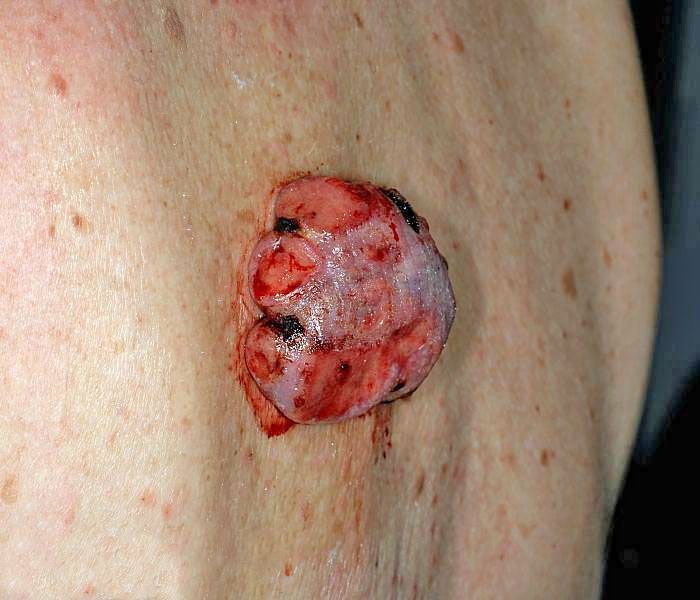- Clinical Technology
- Adult Immunization
- Hepatology
- Pediatric Immunization
- Screening
- Psychiatry
- Allergy
- Women's Health
- Cardiology
- Pediatrics
- Dermatology
- Endocrinology
- Pain Management
- Gastroenterology
- Infectious Disease
- Obesity Medicine
- Rheumatology
- Nephrology
- Neurology
- Pulmonology
In-Situ Malignant Melanoma In A Mole that Changed Appearance
A biopsy is the only way to determine if this is a primary cutaneous neoplasm or a cutaneous metastasis from a visceral carcinoma.

A 63-year-old man presented for medical attention for a slowly growing, 8-cm skin lesion on the back. The oozing mass was slightly tender and often bled spontaneously.
Key point: This appears to be a tumor. The size and history of bleeding suggest a malignancy. There is no way to know if this is a primary cutaneous neoplasm (basal cell or squamous cell carcinoma, soft tissue sarcoma, malignant melanoma) or a cutaneous metastasis from visceral carcinoma without performing a biopsy. Aside from routine histology, tumor markers and gene mutations may be important in determining optimal therapy. A biopsy disclosed malignant melanoma. A systemic workup revealed widespread, multi-organ metastatic disease.
Treatment: The primary cutaneous lesion was excised. Because of the presence of the V600E B-raf mutation, vemurafenib chemotherapy was started, and the patient responded well.
Note: New, targeted therapies offer hope of prolonged progression-free survival-and even cure-in situations in which the prognosis was previously quite grim.
